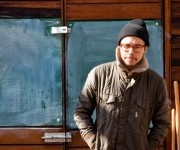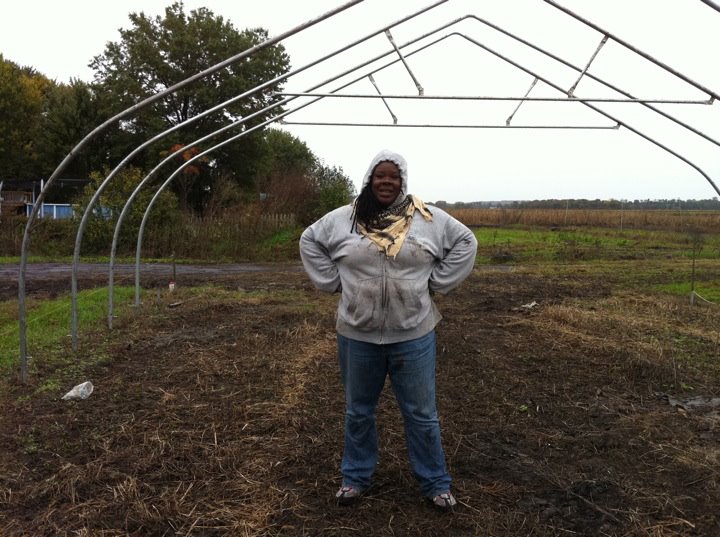Grist is proud to present the Change Gang — profiles of people who are leading change on the ground toward a more sustainable society and a greener planet. Some we’ve written about before; some are new to our pages. Some you’ll have heard of; most you probably won’t. Know someone we should add to the Change Gang? Tell us why.
As an architect, Brooklyn resident Dylan House has always preferred hands-on work. Instead of drawing up blueprints and sketching designs, he likes to build things. That may explain why one recent weekend in November he and some of his colleagues at the Hester Street Collaborative spent their Saturday building a cart.
But this repurposed bicycle trailer is not just any old cart, says House. It’s a tool for facilitating a community-driven collaborative design process. It includes a foldout table and multiple compartments, he says, “where people can put the different materials they are using, whether it is pamphlets or flyers or clipboards or cameras or recording equipment for oral histories.”
It’s “highly designed,” says House. “I’m very excited about it.”
It’s also an architectural pun on itself. In the architectural design community, the word “charrette” — French for cart — is used to describe an intense period of collaborative design activity. The term is believed to date back to the École des Beaux-Arts in 19th-century France, where students would be furiously finishing up their work even as they used a cart to carry their drawings to an exhibition or their final examination.
The mission of the Hester Street Collaborative is to “empower residents of underserved communities by providing them with the tools and resources necessary to have a direct impact on shaping their built environment.” For House, this means setting up charrettes in which a particular group — park neighbors, or school children, or LGBT youth — comes together to brainstorm ways to improve their local public space. Quite often the challenge is to find a way to engage people who aren’t normally part of the design process — whether because of age limitations, or language issues, or any other roadblock.
House recalls helping residents near a park in Chinatown targeted for renovation take part in a paper-lantern making project.
“You could write your wish for the park on the lanterns in whatever language you felt comfortable with, or you could just draw it — if you wanted to see more green spaces you could draw a really green park.”
House grew up in a small town in upstate New York, but he was always fascinated by the big city, he says. He studied architecture at the Pratt Institute of Design in Brooklyn, but soon realized that there were some limitations on what architects could achieve in the context of a city as built-up as Manhattan. This led him to focus his interest on urban planning issues and how communities can affect their immediate environments.
Now House has come full circle, building an actual charrette to facilitate the charrette process. The happy result of Hester Street’s strategy, says House, is a greater degree of positive neighborhood interaction, vibrant parks, and an enhanced sense of community.
Winning over the various New York government agencies that have jurisdiction over park construction and renovation, or, say, waterfront redevelopment, has been a learning experience for both sides, according to House, who gives special credit to the New York City Parks and Recreation Department for its receptivity to community goals.
“Our goal is to facilitate this conversation between the agency and the community,” says House, “to make the agency more responsive to community needs, and at the same time help the community understand what the process is and who the players are, and how they can have a seat at the table there when we do these sort of input gathering activities and modeling activities and design activities.”
Unexpected things happen as House’s projects evolve. The paper lantern project turned into an annual temporary art installation at the Chinatown park that celebrates the Chinese Lunar New Year. And who can tell what will happen once other communities start taking advantage of the Hester Street “cart” to concoct their own dreams? Seeing what emerges, says House, “is the fun part.”



